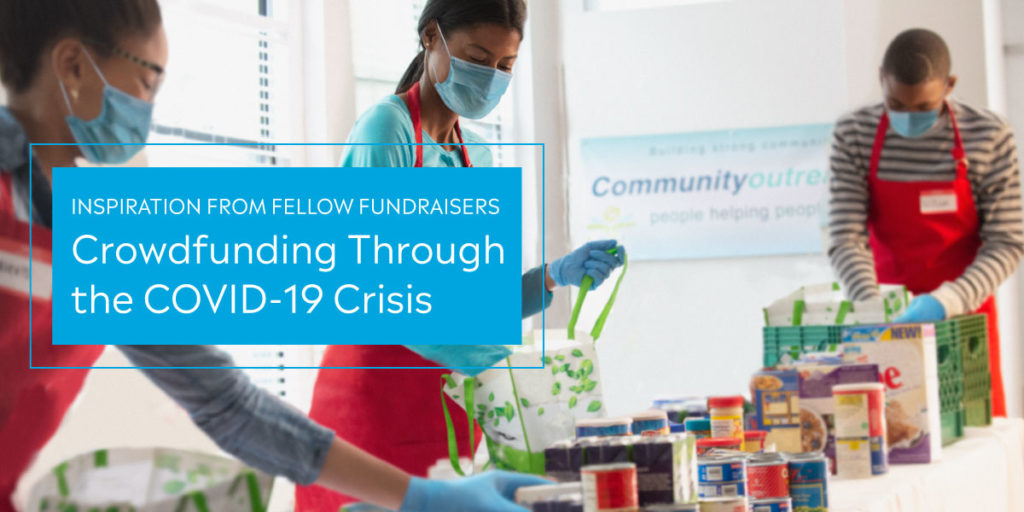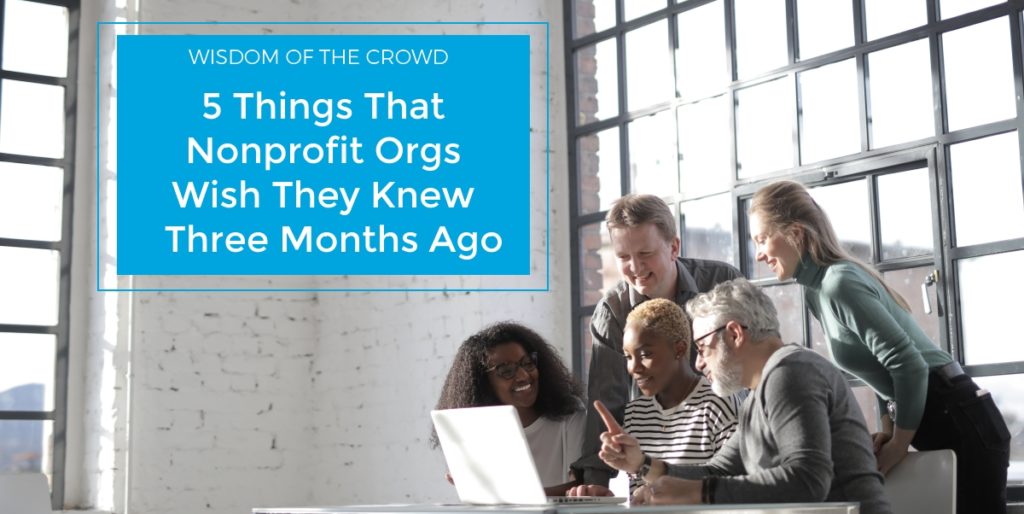This guest blog post was brought to you by DonorPerfect. Read the full article here.
Feeding Long Island’s residents and raising awareness about hunger for nearly thirty years, Island Harvest Food Bank is the largest hunger-relief organization on Long Island. In the wake of the COVID-19 crisis, the team at Island Harvest Food Bank knew that it was up to them to rally residents to combat the ever-growing need for food.
Island Harvest staff members needed to act fast and temporarily modify their business model to meet Long Island residents’ immediate need for food support. Their traditional model of generating and distributing donated food was not sustainable in the new climate, so they pivoted to a purchase-based model to feed as many families as they could right away. The hunger just couldn’t wait.
Island Harvest initially ordered $250,000 of specially designed meal boxes to distribute to families, seniors, veterans, and the immunocompromised who couldn’t leave their homes. When the time was right, Development Manager Ryan Haugstatter created a crowdfunding campaign with an initial goal of $250,000. To the delight of their entire organization, a community of 103 crowdfunding fundraisers joined with nearly 6,000 online contributors to raise an overall total of $955,712 in web-based donations (and counting!) in a matter of just three months!
7 Actions for Nonprofit Crowdfunding Success
You too can leverage crowdfunding to find similar success. Here are seven actions Island Harvest took to empower their community to support them through one of their greatest challenges.
Start with a small goal. Then build on it.
The team at Island Harvest set out with a clear and manageable goal of raising $250,000 to support the organization’s immediate response to their community’s hunger emergency. Ryan warns that setting the bar too high may discourage those who are unable to give large amounts from donating. He suggests, “Start smaller, and when you reach that particular goal increase it if you find the need is still there. Just explain where you can, the reason you’re upping your goal.”
Each time you increase your goal, you have another chance to promote your mission. In addition to spotlighting your crowdfunding campaign via social media and email, Ryan suggests updating your organization’s crowdfunding page, “What we do is we change the verbiage on the crowdfunding site, and we always make sure that we’re reflecting that the money that was raised is just as important as what we’re trying to raise right now. In our outreach, we always spoke about the need to raise funds with the need to support the organization’s mission and programs.”
Over the course of their campaign, Island Harvest adjusted their goal four times, from $250k to $500k to $750k to $1 million to $1.5 million. With the promotion of new, increased goals, Island Harvest even gained some repeat donors, coming back to give for their fifth time! The growing needs of Long Island’s residents required a continued appeal for the community’s help.
Be transparent about how you allocate crowdfunding dollars.
At Island Harvest, more than 94% of expended resources go directly to programs and services that support more than 300,000 Long Islanders facing hunger.
Knowing this builds contributors’ confidence in the organization. Ryan recommends that other nonprofits share this information with their constituents and be clear about what donors’ dollars are funding. “Twenty-five dollars was the amount that was able to purchase one family meal pack, which feeds a family for three to four days. I think also by breaking it down and letting [constituents] know what amount will go towards the purchase of these family meal packs, that also played a part in how much people were willing to give.”
Empower people to support you however they can.
Crowdfunding was an effective way for Island Harvest to fundraise because it enabled their entire community to participate in some way. Even if individuals were unable to donate money or could only contribute a small amount, they could feel connected to the mission by creating a peer-to-peer fundraising page to share with their network to raise money on the organization’s behalf.
Ryan explains, “Even if you can only give $5 but were able to create your own crowdfunding page and put it on your social media channels, that is just as much support as giving us $5. This can actually turn a $5 contribution into a much larger gift through multiple gifts from the crowdfunding effort. Because really, the advocacy and letting people know about the work that we do and our mission, that is what has also served as a motivator for others to give.”
Recruit corporate fundraisers.
Corporations are a great place to start when aiming to quickly build a network of fundraisers. Many businesses have corporate social responsibility programs that encourage their employees to give back to their community. This strategy is especially beneficial because employees can double their donation through their employer’s matching gift program. And in the workplace, we all know there are lots of opportunities for friendly competition for a good cause.
Through the COVID-19 pandemic, Island Harvest didn’t want to immediately reach out to individuals, knowing that many of them may have lost their jobs. Instead, they reached out to corporations and local businesses they knew were still operating and successfully gained their partnership.
Invite news coverage and creativity.
Island Harvest established a relationship with the NY Metro and Long Island’s media outlets with the help of their public relations consultant who tuned local media into all the wonderful work that Island Harvest is doing. If you aren’t currently in communication with your local news networks, reach out because they are often looking for stories about social good, especially during these trying times. Even without an established connection, Island Harvest’s individual fundraisers found ways to contact local news stations to reach a larger audience with their individual fundraising pages.
A former employee of Island Harvest made headlines when she raised 1,000 lbs of food and $500 on behalf of Island Harvest in honor of her birthday. She placed boxes at the end of her driveway to collect food and monetary donations, inviting friends and neighbors to stop by. A parade of cars lined the street to support her cause.
Another individual inspired others to give and to stay healthy from home. He reached his goal of $5,000 by committing to 5,000 push-ups in 24 hours. Staying tuned in to their crowdfunders’ creative fundraising strategies gave Island Harvest the opportunity to pitch to local reporters and share their fundraisers’ awesome promotional ideas on their social media feeds.
Involve your board and executive team.
Your board members and executives are likely well-connected in your community and can serve as effective solicitors of major donors. Ryan suggests leveraging their stewardship skills by encouraging them to support your crowdfunding campaign. He explains, “We asked [the board] to contribute towards [the campaign], and additionally, we encouraged them to create their own crowdfunding pages and just reach out to their own network that they found appropriate to reach out to.” Ryan suggests encouraging board members, friends, and staff to use their own social media platforms, as well, to share special stories about the work of the organization, program goals, and funding needs.
Ryan also recommends hosting discussions with your supporters through virtual meetings to update them on your organization’s progress. He shares, “Our CEO and president scheduled several virtual meetings with top contributors to give updates and reports on our work. Also, our crowdfunding fundraisers were established to encourage others to create their own crowdfunding pages. We reached out to a targeted list of higher level contributors to participate and expanded it when we could accommodate additional participants.”
Island Harvest gained more fundraisers and strengthened the passion for fundraising in existing crowdfunders by hosting these meetings. Ryan attributes this success to the president’s ability to share about the organization’s past progress in a way that inspires their donors. Maintaining contact with supporters to report on your established programs, the need at hand, and how successful you’ve been thus far motivates them to get involved in all the good you’re doing.
Watch the power of crowdfunding go to work.
When you give your network the tools they need to fundraise on your behalf, you enable your supporters to be your ambassadors. Passionate about your mission and bringing their own stories to the table, fundraisers can rally their networks on a very personal level and reach a much broader audience. Ryan shares, “We started to see so many more individuals creating crowdfunding pages and having their friends and colleagues reaching out – even securing support from across America – to donate to their [pages]. It was really, really powerful. I’ve never seen anything like it before.”
Ryan believes that fundraisers were drawn by the ability to create their own pages because they could:
- Easily set up their own crowdfunding project
- See their name in a list of fundraisers on Island Harvest’s main crowdfunding page
- Create their own page with a personal story and goal
- Watch Island Harvest’s progress bar, along with their own, and know that they were a part of something important
Ryan explains, “I think it encourages contributors to help us when they see the goal. Every time they put even $5 or $10 in, they get to see the bar increase and be able to have their name on [the page] with a little note, it makes them feel even more important to the mission. That’s why I love the feature of the crowdfunding page on DonorPerfect.”
Ready to Get Started with Crowdfunding?
Here’s how to get started, step-by-step.
Thank you to Ryan Haugstatter and Island Harvest Food Bank for sharing with us this inspiring story of how they brought their community together and for answering the call when their most impacted residents needed them most through COVID-19. We wish the team and their fundraisers our very best as they push forward to see their community through the crisis.







